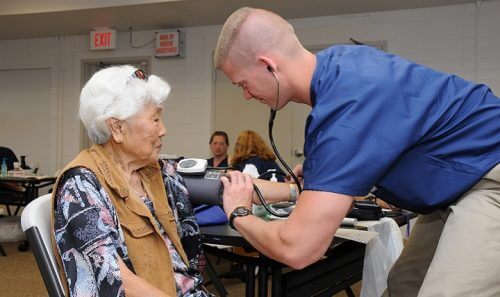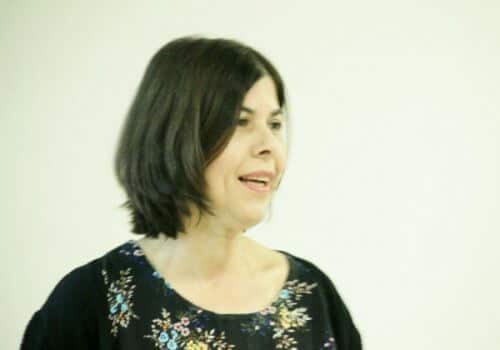The volume of data accumulated about patients makes it possible to change the approach in medicine in general and geriatric medicine in particular.

Artificial intelligence makes it possible to predict elderly people who are expected to deteriorate in order to focus their treatment, said Dr. Orit Goldman from the Israel Academic College in Ramat Gan and the Ono Academic College at a joint meeting of the Department of Information Systems at the Tel Aviv Jaffa Academic College and the Bureau of Information Technology, which dealt with the worlds of big data and artificial intelligence. which took place last week (Thursday).
According to her, "Israel's population is aging rapidly. According to OECD estimates, in 2030 there will be almost 1.5 million elderly people in Israel. About half a million more than today. Life expectancy is increasing, but with it so is the number of chronic patients, especially those suffering from several diseases at the same time."
Dr. Goldman, who worked until a year ago at the research institute of Klalit Health Services, calls the situation: "the failure of success." The efficiency of treatments in recent years for certain diseases, especially heart failure and various types of cancer, reduces mortality, but means that there will be many more chronic patients. The western lifestyle also increases the number of diseases resulting from a high-fat diet, lack of physical activity, stress at work, and more.
The economic aspect of this phenomenon is that more people need hospitalizations and medications and are required to leave the workforce. This affects the health system, which is required to treat more patients and with more expensive treatments, as well as society, since a large population of patients leaves the workforce and needs rehabilitation.
Treatment of the disease in its early stages
The trend is to move from patients seeking treatment after the onset of the disease, to treating the disease when it is still in its early stages. "If we manage to identify pre-disease conditions, we can prevent the disease or at least postpone it significantly. Since it is impossible to treat all patients with any risk factors, we must identify patients at particularly high risk and then we can direct the limited resources to those who need them most.
It is possible, for example, to take a chest x-ray for the entire population and find who has signs of lung cancer, but this is impractical, so the operation is limited to adults aged fifty and older, who smoke. And so is the invitation of the entire population for colonoscopy tests to detect colon cancer. Instead of appealing to everyone - develop a model that will reduce these groups and invite only those whose risk of getting sick is the highest to be surveyed.

The answer lies in the worlds of data mining and smart algorithms. Many organizations accumulate vast amounts of data in their operational systems. There is a need for data mining analytical models, which will look for patterns in the data. Data comes in many forms: from social networks, from the mountains of emails that are sent every day, there is a jump in the volume of video data created by smartphone users, location data from GPS, information transmitted from sensors. Data mining is nothing new, but the traditional techniques, even the sophisticated ones, rely on the analyst knowing what to look for in the data, and running the appropriate query," said Dr. Goldman to her audience at the conference.
Deterioration prediction model in the elderly
According to her, in recent years, concepts have developed that did not exist before: deep learning, and a data scientist who analyzes the system and with its help reaches unexpected insights.
"Computing capacity is increasing. Image recognition hasn't changed much from 1998 to 2012. Suddenly we have the ability to store lots of data and train neural networks with many layers. Today, the computer analyzes x-rays and learns patterns to provide recommendations to radiographers in the following images. IBM was able to detect flu epidemics from data available on social networks thanks to deep learning. Data mining in medicine and its analysis through deep learning make it possible to gain insights into the causes and conditions in medicine, locating groups at high risk of disease for targeted prevention, and this through the analysis of data mining models to predict the phenomenon."
According to Dr. Goldman, "Klalit Health Services has had a model for predicting the deterioration of the elderly since 2004 in order to intervene and perform preventive treatments. Most seniors have more than one chronic disease. We want to identify those when they are fragile - if we intervene we can help and assist".
According to Dr. Goldman, who as mentioned worked in the general services until about a year ago, the system is constantly undergoing upgrades that will allow it to be adapted to the worlds of big data and data mining capabilities.
See more on the subject on the science website:

3 תגובות
My friend comes from the field of engineering, and is switching to biomedicine. A physicist who develops financial algorithms studies with me. I stayed in the field of engineering but make use of artificial intelligence.
I recently got a gamers computer used for artificial intelligence calculations. It gives artificial intelligence applications roughly 1000 times more power than a regular computer, because of a card that costs NIS 1000. Simply utilizing the core is more efficient.
The results of use justify the difference in my opinion.
A friend of mine who is a researcher in Bar-Ilan performs genomics research exactly as described in the article, he does it with 2 servers with 48 cores, 50 terabytes of memory. Although it sounds expensive, it enables what was previously not possible: mapping genes and proteins to diseases. In my opinion, this creates a leap change in the capabilities of medicine and biological research. Nothing that came before. Previously there was protein-bound copaxone for MS. The change would make such disclosures more routine.